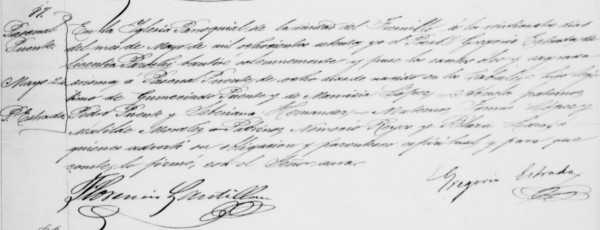10 Tips to Decipher Hard-to-Read Handwriting
Have you had trouble making heads-or-tails of an old, handwritten document? Poor penmanship is a common issue you may encounter while doing your genealogy research. But with a little patience, you may be able to figure out just what was written on the page all those years ago.
Here are 10 tips to help you decipher hard-to-read handwriting:
1. Read the entire document
Try reading through the document a few times to see if what you can and cannot make out. Take your time reading it and get a feel for the writing style.
2. Write it out
Take a stab at writing out the text in your own hand. Leave spaces or an asterisk for letters or words that you are unable to decipher. Once you are done, read over what you have written to see if you can figure out some of the blanks.
3. Compare letters
If you’re having trouble figuring out a letter, try comparing it to the other letters on the page. Check for similarities in the pen strokes. If you have other pages in the same handwriting, try to compare the unknown letters or words against those pages too. Even if you can’t figure out all the letters in a word, you may be able to infer the missing pieces. It may even help to make a table of the letters so that you can compare them easier.
4. Be aware of stylistic variations
Keep in mind the era in which the document was written. Stylistic differences in how we write letters can make it difficult to figure out a word. For example, don’t be surprised if you come across words using a f or p to denote a long s in English documents from the 19th century.
5. Keep in mind the context
Remember to keep in mind the context of the document. Is it a baptism record from the Catholic Church or a perhaps a courthouse record? Sometimes the words used may be unique to terminology used for places such as the church or court.
6. Watch out for letter substitutions
Sometime letters that sound alike are often swapped, so a word with a c will sometimes use an s in its place. Another common example is how a b and v are often interchanged in Spanish. It’s very easy to get thrown off a word if you don’t know to watch out for this, so remember to keep that in mind when analyzing a document.
7. Read it aloud
It may help to read the document aloud as you are trying to decipher its contents. You might hear something you may not have caught while reading it in your head.
8. Look out for abbreviations
Keep an eye out for abbreviations. Abbreviations can often leave you confused as you are trying to decipher a word. It may help to look up common abbreviations from the era to use as a reference.
9. Remember to be patient
Nothing can throw you off more than impatience. It can be frustrating when you are unable to figure out what is written on the page. Remember to remain patient and move slowly so that you don’t miss a thing.
10. Know when to take a break
Remember to take a break if you start to get too frustrated. Staring at old handwriting for too long can leave you with an awful headache! Take breaks often so you don’t burn yourself out. Come back later with fresh eyes and you may finally make a breakthrough!








 Genealogy Discussions
Genealogy Discussions Genealogy Projects
Genealogy Projects Popular Genealogy Profiles
Popular Genealogy Profiles Surnames
Surnames The Geni Blog
The Geni Blog The World Family Tree
The World Family Tree